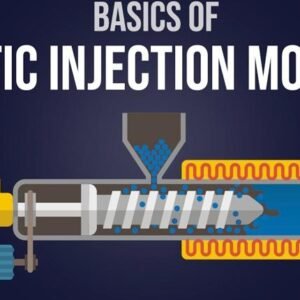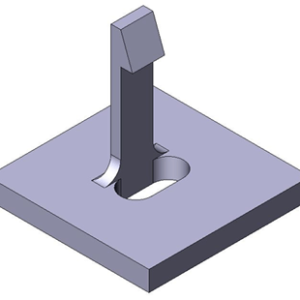メーカー向け, エンジニア, and designers, understanding プラスチック射出成形 is essential. It impacts product design, cost efficiency, 持続可能性, and even future innovation. 記事上で, we will walk through five key aspects you need to know about plastic injection molding, covering its basics, 設計上の考慮事項, advantages and challenges, environmental impact, and emerging trends.
1. The Basics of Plastic Injection Molding
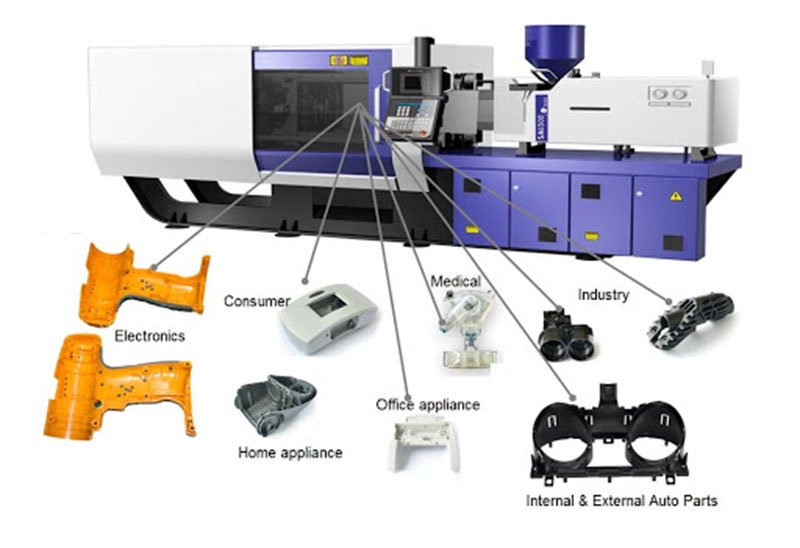
The Basics of Plastic Injection Molding
What Is Injection Molding?
その中心に, plastic injection molding is a process that transforms plastic pellets into finished parts. The process works as follows:
Plastic pellets are fed into the machine through a hopper.
The pellets are heated and melted in a barrel by heaters and a rotating screw.
The molten plastic is injected under high pressure into a mold cavity.
The plastic cools and solidifies, taking the exact shape of the mold.
The mold opens, そして finished part is ejected, ready for secondary finishing if required.
This process is fast, 繰り返し可能, and suitable for producing millions of identical items.
Commonly Used Materials
Different products demand different plastic properties, which is why material choice is critical:
熱可塑性科学 (like polyethylene, ポリプロピレン, ABS, ポリスチレン): Can be reheated and remolded, making them versatile and recyclable. Used in packaging, おもちゃ, 自動車部品, そしてエレクトロニクス.
Thermosetting plastics (such as epoxy resins and phenolic resins): Once set, they cannot be remelted. These are used in applications requiring high heat resistance, such as electrical insulation or cookware handles.
Choosing the right material depends on factors like mechanical strength, 柔軟性, 温度抵抗, chemical durability, そしてコスト.
Key Components of an Injection Molding Machine
An injection molding machine has several essential parts:
Hopper: Entry point for raw plastic pellets.
Heating Barrel & Screw: Melts the pellets and injects the molten plastic into the mold.
Mold: Custom-made steel or aluminum tool that defines the shape, サイズ, and surface finish of the part.
Clamping Unit: Holds the mold shut with high force during injection and cooling.
Ejection System: Pushes the cooled, hardened part out of the mold.
Understanding how these components work together helps in troubleshooting defects and improving production efficiency.
2. Design Considerations and Prototyping
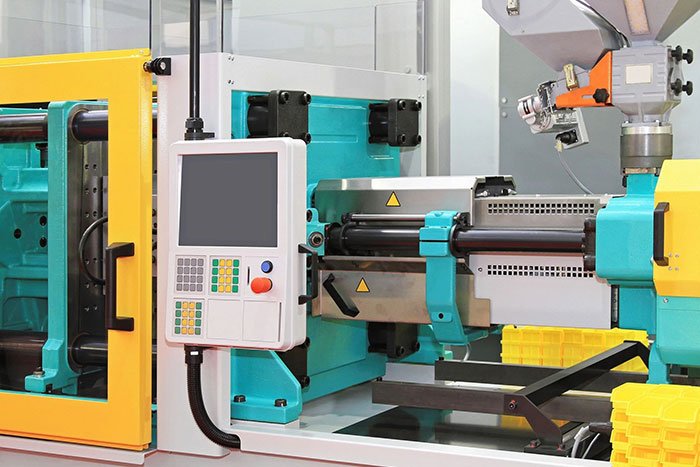
Design Considerations and Prototyping
Importance of Design
Design is not just about aesthetics—it directly affects how easily a part can be molded and how much it costs to produce. Good design:
Prevents manufacturing defects such as warping, ヒケ, and incomplete filling.
Reduces material usage and cycle time.
Ensures that the final product is both functional and visually appealing.
Key Design Guidelines for Injection Molding
Uniform Wall Thickness: Ensures consistent cooling and prevents warping.
抜き勾配角度: Small tapers on vertical walls make it easier to eject parts from the mold.
Ribs and Gussets: Add strength without increasing thickness, but must be carefully designed to avoid shrinkage.
ゲートの位置: Determines how molten plastic flows into the mold, affecting surface finish and structural integrity.
Rounded Corners: Reduce stress concentration and improve plastic flow.
Shrinkage Allowance: Accounts for the fact that plastics contract as they cool.
Role of Prototyping and 3D Printing
Before investing in expensive molds, prototyping is essential. 3D printing and other rapid prototyping methods allow designers to:
Test functional models for fit, ergonomics, そして強さ.
Identify design flaws early.
Present physical samples to clients and stakeholders for feedback.
This step reduces costly revisions later in production and shortens time-to-market.
3. Benefits and Limitations
射出成形の利点
High Efficiency and Speed: After the mold is made, production runs can be extremely fast, producing thousands of parts per day.
Consistency and Precision: Produces identical parts with tight tolerances.
素材の柔軟性: Can use a wide variety of plastics, fillers, and additives for strength, UV抵抗, flame retardancy, or color.
Complex Shapes Possible: Intricate geometries and fine details can be molded that would be difficult or impossible with other processes.
スケーラビリティ: Ideal for mass production where economies of scale reduce per-part costs significantly.
Limitations and Challenges
初期費用が高い: Designing and machining a mold requires a large upfront investment.
Design Restrictions: Some features may be hard to mold, requiring complex mold designs that increase cost.
Material Constraints: Each plastic type has limitations, such as heat resistance or brittleness.
Production Volume Requirement: Only cost-effective when producing in large quantities, as the mold cost must be spread over many parts.
4. Environmental Impact and Sustainability
The Challenge of Plastic Waste
One of the biggest criticisms of plastic injection molding is its environmental footprint:
Plastic waste from defective parts and single-use items contributes to landfill and ocean pollution.
Energy-intensive production, especially heating and clamping, increases greenhouse gas emissions.
Dependence on fossil fuels, since most plastics are derived from petroleum.
Efforts Towards Sustainability
The industry is actively pursuing greener practices:
Recycling and Regrinding: Scrap plastic can be reground and reused, reducing waste.
Biodegradable and Bio-based Plastics: Materials derived from plants or designed to decompose naturally are gaining popularity.
Energy-efficient Machines: Modern electric injection molding machines consume less energy than older hydraulic systems.
Closed-loop Manufacturing: Monitoring systems that minimize scrap and optimize material usage.
Sustainability is no longer optional—it’s becoming a necessity in order to align with stricter regulations and consumer expectations.
5. Innovations and Future Trends
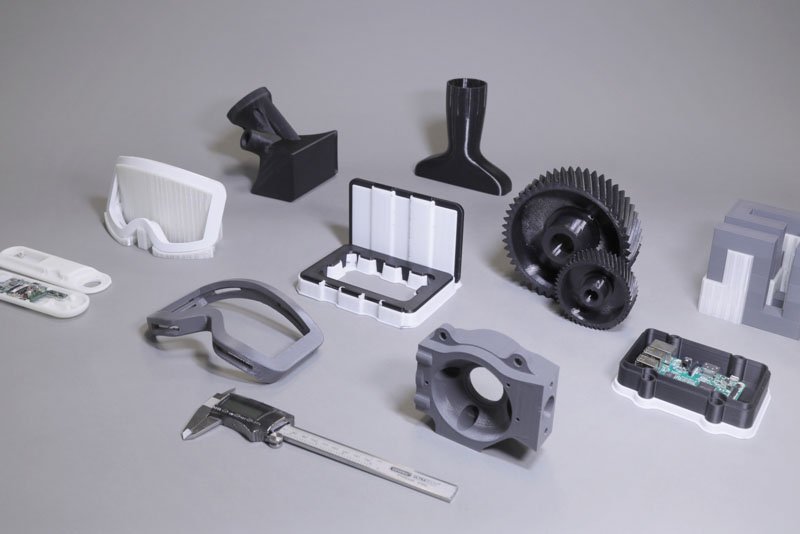
Innovations and Future Trends
Current Technological Advancements
自動化とロボット工学: Robots now handle part removal, 組み立て, and quality checks, reducing labor costs and human error.
Smart Molds: Embedded sensors track pressure, 温度, and cooling rates in real time, improving consistency.
3D Printing for Molds: Additive manufacturing allows rapid, cost-effective mold creation with complex geometries.
業界 4.0 Integration: IoT and AI are making injection molding machines smarter, enabling predictive maintenance and process optimization.
Future Directions
Greater Focus on Sustainability: Expect broader use of recycled and biodegradable plastics.
New Materials Development: Advanced polymers with improved mechanical and environmental properties.
Localized Production: More decentralized, automated factories reducing supply chain dependency.
Data-Driven Manufacturing: AI-driven predictive analytics for defect reduction, より短いサイクル時間, and adaptive process control.
結論
Plastic injection molding remains one of the most important manufacturing processes of our time. It provides unmatched efficiency, scalability, および汎用性, making it the backbone of industries ranging from consumer goods to aerospace.
しかし, it is not without its challenges—especially when it comes to environmental concerns and high initial tooling costs. ありがたいことに, innovations in materials, オートメーション, and sustainability practices are addressing these issues.
For engineers, デザイナー, およびメーカー, mastering the fundamentals of plastic injection molding—its process, design rules, 利点, 制限事項, and future directions—is essential for success in product development and modern manufacturing.
続きを読む:
Rapid Prototyping in Manufacturing


